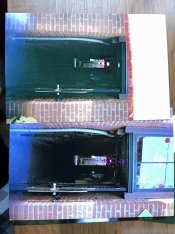quinnmat
Member
Hey everyone,
First time poster here! I've just started shooting film after finding moms old Pentax in the closet, and am absolutely loving it.
However, I'm a bit confused when it comes to over and under exposure. I'm aware that film exposure isn't like digital; underexposed doesn't mean dark, and overexposed doesn't mean too light.
I've been getting a mix of nicely exposed shots, and shots that look murky and washed out. I've spoken to two different guys at two different camera stores, one says I'm overexposing, the other says I'm underexposing.
Hope you guys can help me out here. Are the shots I'm showing here under or overexposed? I'm shooting superia 400 at 400 on a Pentax ME.
Cheers,
Quinn

See what I mean by murky? Everything looks overly faded.

The shot of my dog is what I want to achieve - the dark areas appear dark and not washed out.
Thanks In advance!
First time poster here! I've just started shooting film after finding moms old Pentax in the closet, and am absolutely loving it.
However, I'm a bit confused when it comes to over and under exposure. I'm aware that film exposure isn't like digital; underexposed doesn't mean dark, and overexposed doesn't mean too light.
I've been getting a mix of nicely exposed shots, and shots that look murky and washed out. I've spoken to two different guys at two different camera stores, one says I'm overexposing, the other says I'm underexposing.
Hope you guys can help me out here. Are the shots I'm showing here under or overexposed? I'm shooting superia 400 at 400 on a Pentax ME.
Cheers,
Quinn
See what I mean by murky? Everything looks overly faded.
The shot of my dog is what I want to achieve - the dark areas appear dark and not washed out.
Thanks In advance!



